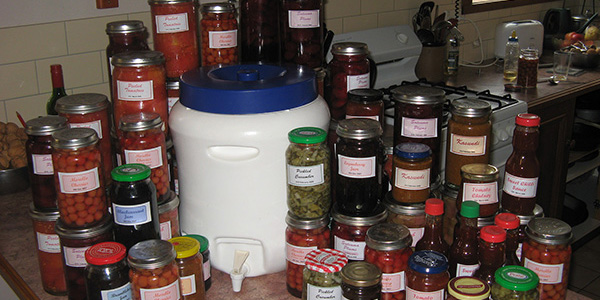One of the easiest ways to preserve your surplus tomato crop is to bottle them as peeled tomatoes. It is quicker and more flexible (small batches can be processed more easily than using a passata making machine) then most people think.
Before you begin processing the tomatoes you will need to gather the equipment needed and lay it out ready to start.
- LARGE POT To heat the water in.
- LARGE BOWL Filled with cold water.
- TWO BOWLS OR HIGH SIDED PLATES To catch spillages of tomato pulp and juice.
- LARGE SLOPS BUCKET To put the skins and used water in.
- FOWLERS VACOLA PRESERVING UNIT Or similar canning unit.
- FOWLERS JARS, LIDS AND CLIPS OR LARGE JARS WITH LIDS
- TONGS To lift the tomatoes out of the hot water.
- Knife Either very sharp or with a serrated edge. I use an old serrated steak knife.
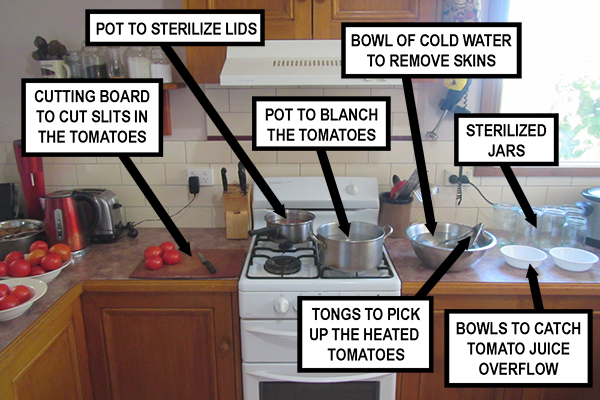
Suggested layout of the equipment for rapid processing of the tomatoes.
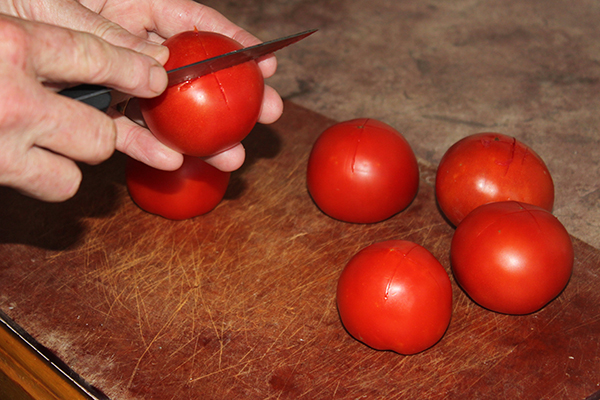
With a serrated or sharp knife make two shallow cuts on top of each tomato to form a cross.
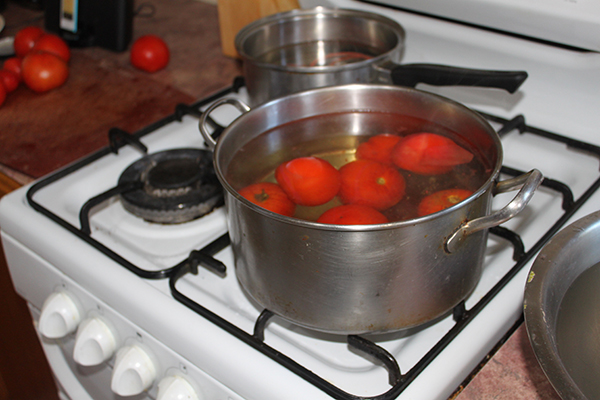
Bring the water in the pot to just below boiling point them place the cut tomatoes in the water in batches of five or six. The tomatoes should be left in the water only until the skins at the edges of the cuts begin to separate from the flesh, usually no more than a minute or two.
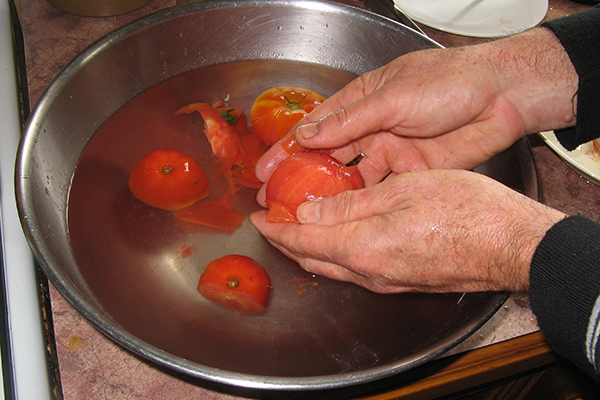
Using tongs remove the tomatoes from the hot water and place them in the bowl of cold water. Remove the skins by rotating your fingers over the tomatoes. If the temperature and duration that the tomatoes were in the hot water was correct then the skins will come off the tomatoes easily.
If the skins are still sticking to the pulp then they weren’t heated for long enough or the water wasn’t hot enough. If the skin comes off with some of the pulp attached then the water was too hot or the tomatoes were left in too long. Adjust the next batch accordingly.
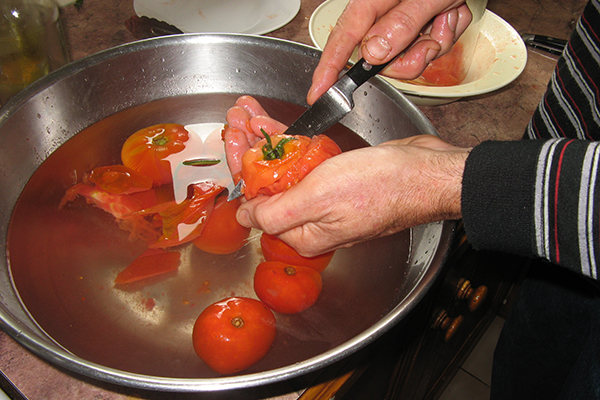
Cut out the sepals (where the tomatoes are attached to the plant). If the fruits are large, cut them into smaller more manageable pieces.
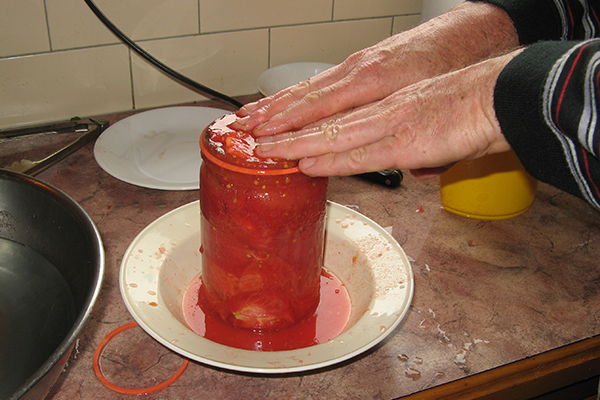
Fill the jars with the skinned tomatoes, pushing them down to squeeze out as much liquid as possible.
Note that the acid levels of tomatoes vary depending on the variety. A general rule of thumb is that redder tomatoes are more acidic, though this is not always the case. Tomatoes with low acidity may go off unless processed using a pressure canner. To be on the safe side it is a good idea to add citric acid or lemon juice to any tomatoes you are preserving to lower the Ph (acidity) level. The recommended rates are 1/2 teaspoon of citric acid to a 1L jar, or add 2 tablespoons lemon juice per 1L jar.
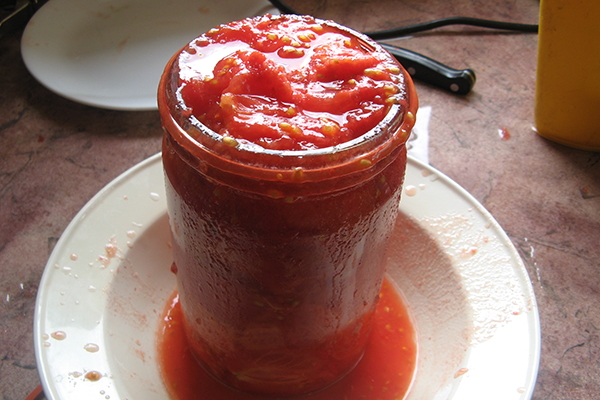
Poor some excess tomato liquid over the tops of the jars to remove any air pockets and wash off the seeds. Note that this photo is of a jar that has yet to have its seeds washed off, the juice collected in the bowl is used to wash them off. The seeds need to be washed off as any left on the edge of the jar may break the seal when processing it.
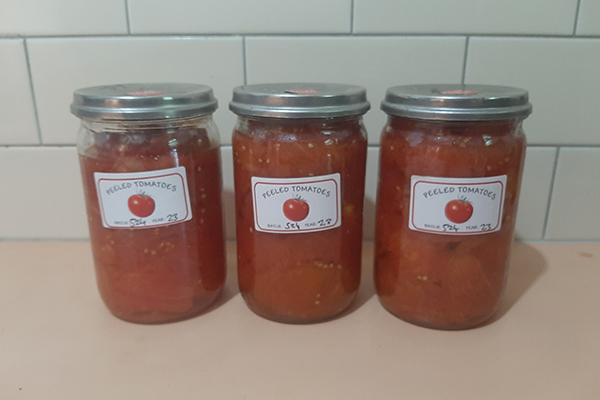
Place lids and clips on the jars and process using the Fowlers preserving system. This photo of three Number 31 (1 litre) Fowlers jars after they have been heat sealed using the Fowlers system. Once heat sealed the jars can be stored for several years.




